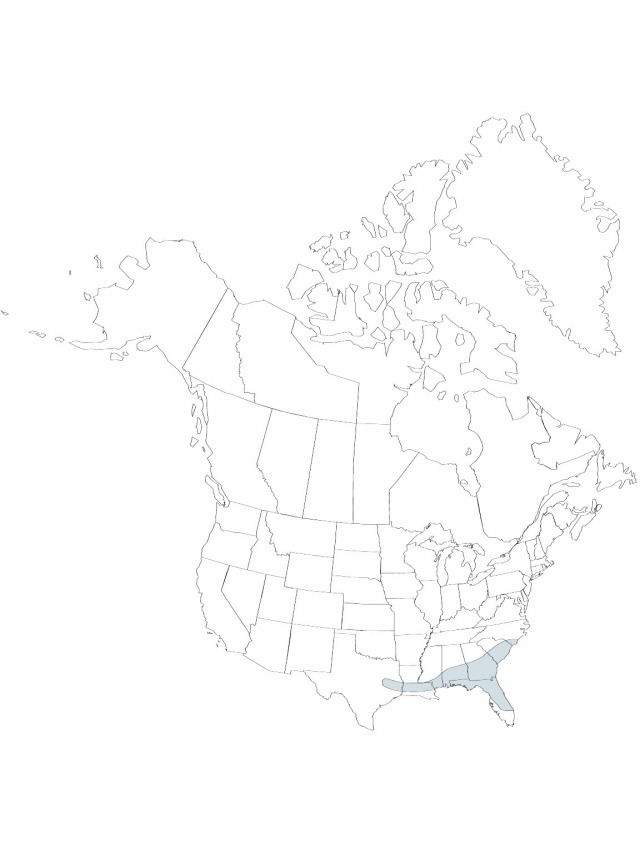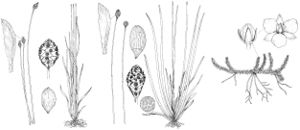Difference between revisions of "Mayaca fluviatilis"
Historie des Plantes de la Guiane francoise [sic] 1: 42, plate 15. 1775.
FNA>Volume Importer |
FNA>Volume Importer |
||
| Line 11: | Line 11: | ||
|name=Mayaca aubletii | |name=Mayaca aubletii | ||
|authority=Michaux | |authority=Michaux | ||
| − | }}{{Treatment/ID/Synonym | + | }} {{Treatment/ID/Synonym |
|name=Mayaca caroliniana | |name=Mayaca caroliniana | ||
|authority=Gandoger | |authority=Gandoger | ||
| − | }}{{Treatment/ID/Synonym | + | }} {{Treatment/ID/Synonym |
|name=Mayaca longipes | |name=Mayaca longipes | ||
|authority=Gandoger | |authority=Gandoger | ||
| Line 31: | Line 31: | ||
|habitat=Marshes, seepage areas, springy places, and in or at margins of ponds, pools, streams, and on coastal plain | |habitat=Marshes, seepage areas, springy places, and in or at margins of ponds, pools, streams, and on coastal plain | ||
|distribution=Ala.;Fla.;Ga.;La.;Miss.;N.C.;S.C.;Tex.;Mexico;Central America;South America. | |distribution=Ala.;Fla.;Ga.;La.;Miss.;N.C.;S.C.;Tex.;Mexico;Central America;South America. | ||
| − | |discussion=<p>Some floras have recognized two species in our area, Mayaca fluviatilis, with leaves mostly 4–20 mm, pedicels shorter than the leaves, and capsules oblong-ellipsoid, nearly twice as long as wide; and M. aubletii, with leaves mostly 3–5 mm, pedicels longer than the leaves, and capsules ovoid to nearly globose, nearly as broad as long. Mayaca fluviatilis appears to be the more aquatic form and M. aubletii the more terrestrial one of a single species, and it is quite possible that all or most of the morphologic variation is because of differences in ecology. Experimental work is needed to test the variability in this species as a function of habitat.</p><!-- | + | |discussion=<p>Some floras have recognized two species in our area, <i>Mayaca fluviatilis</i>, with leaves mostly 4–20 mm, pedicels shorter than the leaves, and capsules oblong-ellipsoid, nearly twice as long as wide; and M. aubletii, with leaves mostly 3–5 mm, pedicels longer than the leaves, and capsules ovoid to nearly globose, nearly as broad as long. <i>Mayaca fluviatilis</i> appears to be the more aquatic form and M. aubletii the more terrestrial one of a single species, and it is quite possible that all or most of the morphologic variation is because of differences in ecology. Experimental work is needed to test the variability in this species as a function of habitat.</p><!-- |
--><p>The literature report for Virginia could not be confirmed.</p> | --><p>The literature report for Virginia could not be confirmed.</p> | ||
|tables= | |tables= | ||
| Line 55: | Line 55: | ||
|publication year=1775 | |publication year=1775 | ||
|special status= | |special status= | ||
| − | |source xml=https://jpend@bitbucket.org/aafc-mbb/fna-data-curation.git/src/ | + | |source xml=https://jpend@bitbucket.org/aafc-mbb/fna-data-curation.git/src/8f726806613d60c220dc4493de13607dd3150896/coarse_grained_fna_xml/V22/V22_4.xml |
|genus=Mayaca | |genus=Mayaca | ||
|species=Mayaca fluviatilis | |species=Mayaca fluviatilis | ||
Revision as of 15:58, 18 September 2019
Herbs, submerged or terrestrial. Stems sometimes much branched and matted, decumbent to erect, to 60 cm, usually much less. Leaves: blade narrowly lanceolate to linear, 2–20(–30) cm × 0.5 mm, apex entire or 2-fid. Flowers to 1 cm wide; pedicels 2–12 mm, elongating in fruit to 20 mm; sepals persistent, ovate to lanceolate-elliptic, 2–4.5 × 0.7–1.5 mm; petals rose to maroon or lilac, sometimes whitish basally, broadly ovate, 3.5–5 × 3–4.5 mm; stamens 1.5–3 mm; filaments 1–2 mm; anthers 0.5–1 mm, dehiscing by means of apical, porelike slits; pistils 2–2.3 mm, stigmas 3-lobed to 3-fid. Capsules nearly globose to ellipsoid, often irregular because of abortion, to 4 × 3.4 mm. Seeds 2–25 per capsule, nearly globose, to 1.3 × 0.9 mm; seed coat scrobiculate or ridged and pitted.
Phenology: Flowering spring–fall ([Mar–]May–Oct[–Nov]).
Habitat: Marshes, seepage areas, springy places, and in or at margins of ponds, pools, streams, and on coastal plain
Distribution

Ala., Fla., Ga., La., Miss., N.C., S.C., Tex., Mexico, Central America, South America.
Discussion
Some floras have recognized two species in our area, Mayaca fluviatilis, with leaves mostly 4–20 mm, pedicels shorter than the leaves, and capsules oblong-ellipsoid, nearly twice as long as wide; and M. aubletii, with leaves mostly 3–5 mm, pedicels longer than the leaves, and capsules ovoid to nearly globose, nearly as broad as long. Mayaca fluviatilis appears to be the more aquatic form and M. aubletii the more terrestrial one of a single species, and it is quite possible that all or most of the morphologic variation is because of differences in ecology. Experimental work is needed to test the variability in this species as a function of habitat.
The literature report for Virginia could not be confirmed.
Selected References
None.
